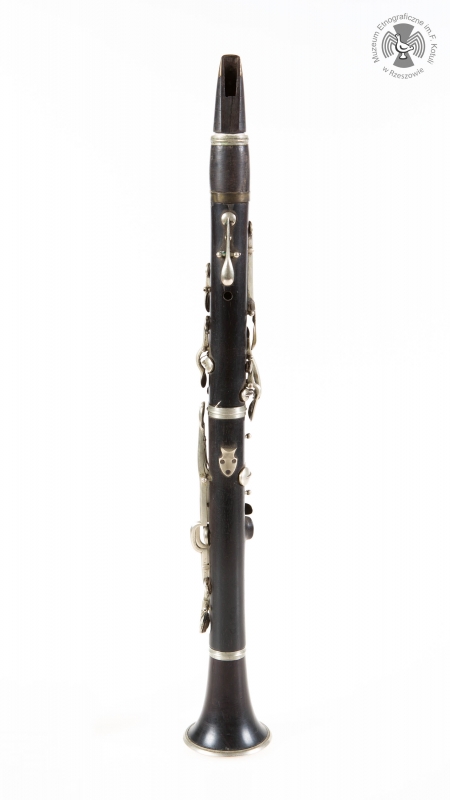C clarinet
Excerpt from the film Siła tradycji [The Power of Tradition], produced as part of the project "Muzyczny folklor Podkarpacia - badania terenowe" [The Musical Folklore of Subcarpathia - Field Studies], Franciszek Kotula Ethnographic Museum in Rzeszów, 2014
C clarinet
Classification: 4 Aerophones / 42 Wind instruments proper / 422 Reedpipes / 422.2 Reedpipes with single reeds (clarinets) / 422.21 Individual reedpipes with single reeds / 422.211 With cylindrical bore / 422.211.2 With fingerholesProducer: factory-made instrument: F. Muss, Vienna
Date: late 19th century / early 20th century
Region: Carpathian area
Country: Austria
Owner: Franciszek Kotula Ethnographic Museum in Rzeszów
Inventory number: MRE 8158
Description: body (wood) made of 5 components (mouthpiece, barrel, upper tube, lower tube, bell), original components may be limited to the bell and the upper and lower tubes; mouthpiece (cracked) slightly narrowing towards a so-called "beak", supplied with a metal mechanism to mount the reed (no reed preserved); keywork and fingerholes located in the upper and lower tube; joints between the mouthpiece and barrel strengthened with brass bands
Measurements: 540 mm
Materials: wood, metal
Inscriptions: upper tube: * / F. MUSS / WIEN / * / a ; lower tube: * / F. MUSS / WIEN / * / C
Sound compass, tuning: the C clarinet is a non-transposing instrument, frequently used in folk practice before World War II, as of now supplanted by the B-clarinet
Performance practice: component of folk bands
Catalog card by: Jolanta Pękacz / Zbigniew J. Przerembski
<< Back











